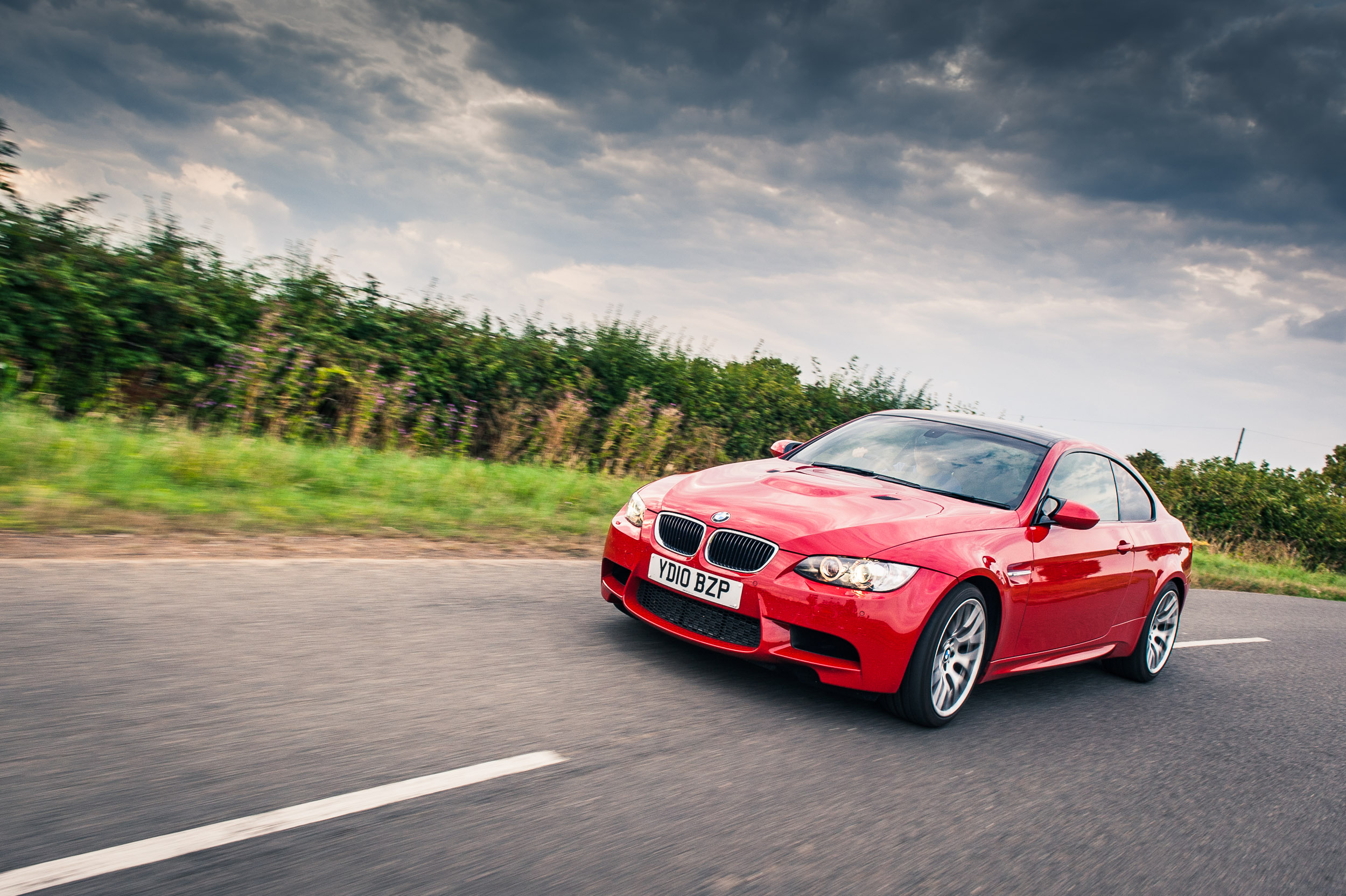The 10 rules of photo composition (and why they work)

The 10 rules of perfect photo composition
Poor photo composition can make a fantastic subject look pretty dull, but a well-framed scene can create a wonderful image from the most ordinary of situations.
With that in mind, we've picked our top 10 photo composition 'rules' to show you how to transform your images from the mundane to the brilliant.
Don't feel that you've got to remember every one of these laws and apply them to each photo you take. Instead, spend a little time practising each one in turn and they'll become second nature to you when you're out with your camera. You'll soon learn to spot situations where the different rules can be applied to best effect.
It doesn't have to be complicated
Photography composition doesn't have to be complicated. There are all sorts of theories about the 'Rule of Thirds' and more complex 'Golden Mean', for example. But if you pay too much attention to strict formulae, your photos will lose any kind of spontaneity.
In the real world, you'll be working with a wide range of subjects and scenes, and this requires a much more open-minded approach. What works for one photo won't necessarily work for another.
The key thing is to understand how all the decisions you make about composition can affect the way a shot looks and how people perceive your photos. The way you frame a shot, choose a focal length or position a person can make all the difference.
Technical know-how is very important in photography, of course, and even in some aspects of photo composition. But to take great shots you need visual knowledge too. Here are 10 key things to look out for…

Rule 1. Simplify the scene
When you look at a scene with your naked eye, your brain quickly picks out subjects of interest. But the camera doesn't discriminate - it captures everything in front of it, which can lead to a cluttered, messy picture with no clear focal point. When looking back at the shot, you eye will have nowhere to settle.
What you need to do is choose your subject, then select a focal length or camera viewpoint that makes it the center of attention in the frame. This way you're telling the viewer what's important in the frame. You can't always keep other objects out of the picture, so try to keep them in the background or make them part of the story.
Silhouettes, textures and patterns are all devices that work quite well in simple compositions.
Why it works...
The simpler the shot the bigger the impact
1. Move in close to cut out the other parts of the scene
2. Silhouettes and shapes make strong subjects
3. The balloon's radial lines draw you into the frame

Rule 2. Fill the frame
When you're shooting a large-scale scene it can be hard to know how big your subject should be in the frame, and how much you should zoom in by. In fact, leaving too much empty space in a scene is the most widespread compositional mistake. It makes your subject smaller than it needs to be and can also leave viewers confused about what they're supposed to be looking at.
To avoid these problems you should zoom in to fill the frame, or get closer to the subject in question. The first approach flattens the perspective of the shot and makes it easier to control or exclude what's shown in the background, but physically moving closer can give you a more interesting take on things.
Why it works...
Give your subject the prominence it deserves
1. Filling the frame makes the subject larger and cuts down on the clutter
2. The high, off-centre placement creates a more interesting scene
3. The rolling hills create an S-shaped curve that leads you across the frame

Rule 3. Aspect ratio
It's easy to get stuck in a rut and take every picture with the camera held horizontally. Try turning it to get a vertical shot instead, adjusting your position or the zoom setting as you experiment with the new style. You can often improve on both horizontal and vertical shots by cropping the photo later.
After all, it would be too much of a coincidence if all your real-life subjects happened to fit the proportions of your camera sensor. Try cropping to a 16:9 ratio for a widescreen effect, or to the square shape used by medium-format cameras.
Why it works...
Not sure whether horizontal of vertical is best? Try both!
1. You can crop the shot later if a subject is too tall to shoot - especially now camera's over high resolution sensors
2. Turn the camera and try an upright shot to get different - and sometimes much improved - results
3. Remember that your camera's aspect ratio might not be the same as the paper you intend to print on

Rule 4. Avoid the middle
When you're just starting out, it's tempting to put whatever you're shooting right in the center of the frame. However, this produces rather static, boring pictures. One of the ways to counteract this is to use the Rule of Thirds, where you split the image up into thirds, both horizontally and vertically, and try to place your subject on one of these imaginary lines or intersections. This is an overrated approach, though.
Instead, move your subject away from the center and get a feel for how it can be balanced with everything else in the scene, including any areas of contrasting color or light. There are no hard and fast rules about achieving this kind of visual balance, but you'll quickly learn to rely on your instincts - trust that you'll know when something just looks right.
Why it works...
Make your shots more interesting by shifting the balance
1. Don't be a slave to the 'Rule of Thirds' - just get your subject off-centre
2. Look out for any 'balancing' elements in the scene, such as this lady in the foreground.
3. The converging lines help lead the eye into the frame.

Rule 5. Leading lines
A poorly composed photograph will leave your viewers unsure about where to look, and their attention might drift aimlessly around the scene without finding a clear focal point. However, you can use lines to control the way people's eyes move around the picture.
Converging lines give a strong sense of perspective and three-dimensional depth, drawing you into an image. Curved lines can lead you on a journey around the frame, leading you towards the main subject.
Lines exist everywhere, in the form of walls, fences, roads, buildings and telephone wires. They can also be implied, perhaps by the direction in which an off-center subject is looking.
Why it works...
Lines can be important compositional devices
1. When pictures like this one contain a strong line, it's almost impossible for your eyes not to follow it
2. As the posts in this shot get further away, they create a converging effect that pulls you in
3. The fence leads you straight to the focal point - the small figure in the distance

Rule 6. Use diagonals
Horizontal lines lend a static, calm feel to a picture, while vertical ones often suggest permanence and stability. To introduce a feeling of drama, movement or uncertainty, look for diagonal lines instead.
You can need nothing more than a shift in position or focal length to get them - wider angles of view tend to introduce diagonal lines because of the increased perspective; with wide-angle lenses you're more likely to tilt the camera up or down to get more of a scene in.
You can also introduce diagonal lines artificially, using the 'Dutch Tilt' technique. You simply tilt the camera as you take the shot. This can be very effective, though it doesn't suit every shot and is best used sparingly.
Why it works...
Diagonal lines give a strong sense of movement and force
1. The perspective given by a wide-angle lens creates diagonal lines automatically
2. Low viewpoints make you tilt the camera upwards, which strengthens diagonals
3. Here, the photographer has left space in the middle of the shot for our eyes to rest on St Paul's Cathedral

Rule 7. Space to move
Even though photographs themselves are static, they can still convey a strong sense of movement. When we look at pictures, we see what's happening and tend to look ahead - this creates a feeling of imbalance or unease if your subject has nowhere to move except out of the frame.
You don't just get this effect with moving subjects, either. For example, when you look at a portrait you tend to follow someone's gaze, and they need an area to look into (check out our guide to posing portraits).
For both types of shot, then, there should always be a little more space ahead of the subject than behind it.
Why it works...
The car's position in the frame is no accident
1. This speeding car needs space to move into, or the shot would look wrong
2. Note the strong lines in the road, reinforcing the sense of movement
3. The photographer has used a tilt to emphasize the strong diagonals

Rule 8. Backgrounds
Don't just concentrate on your subject - look at what's happening in the background, too. This ties in with simplifying the scene and filling the frame. You can't usually exclude the background completely, of course, but you can control it.
You'll often find that changing your position is enough to replace a cluttered background with one that complements your subject nicely. Or you can use a wide lens aperture and a longer focal length to throw the background out of focus.
It all depends on whether the background is part of the story you're trying to tell with the photo. In the shot above, the background is something that needs to be suppressed.
Why it works...
No matter how dull it is, you need to get the background right
1. Use a long focal length and wide lens aperture to throw busy, distracting backdrops out of focus
2. Fill the frame - the less space that's taken up by an unwanted background the better
3. Choose your camera position carefully, as this will affect what's in the background

Rule 9. Creative with colors
Bright primary colors really attract the eye, especially when they're contrasted with a complementary hue. But there are other ways of creating color contrasts - by including a bright splash of color against a monochromatic background, for example. You don't need strong color contrasts to create striking pictures, though.
Scenes consisting almost entirely of a single hue can be very effective. And those with a limited palette of harmonious shades, such as softly lit landscapes, often make great pictures.
The key is to be really selective about how you isolate and frame your subjects to exclude unwanted colors.
Why it works...
Create abstract shots from contrasting colors
1. Blue and either orange or yellow are known as complimentary colors and produce vivid contrast
2. Framing is important when attempting to control the range of colors in a picture
3. With the off-center composition, the orange walls really dominate

Rule 10. Breaking the rules
Photo composition is a little like a visual language - you can use it to make your pictures pass on a specific message. However, just as we sometimes use the written word to create a deliberately jarring effect, we can do the same with photos by breaking with standard composition conventions.
Doing it by accident doesn't count, though! It's when you understand the rules of composition and then break them on purpose that things start to get interesting. It's often best to break one rule at time, as John Powell does in the image above.
Just remember: for every rule we suggest, somewhere out there is a great picture that proves you can disregard it and still produce a fantastic image!
Why it works...
Follow some rules but break others to make a statement
1. This lady's looking straight out of the frame, which puts you on edge - and that's the idea!
2. The man's gaze creates a really strong imaginary line connecting the two figures
3. The lady's off-centre position works really well, and she's balanced well by the man at the back of the shot

Phil Hall is an experienced writer and editor having worked on some of the largest photography magazines in the UK, and now edit the photography channel of TechRadar, the UK's biggest tech website and one of the largest in the world. He has also worked on numerous commercial projects, including working with manufacturers like Nikon and Fujifilm on bespoke printed and online camera guides, as well as writing technique blogs and copy for the John Lewis Technology guide.